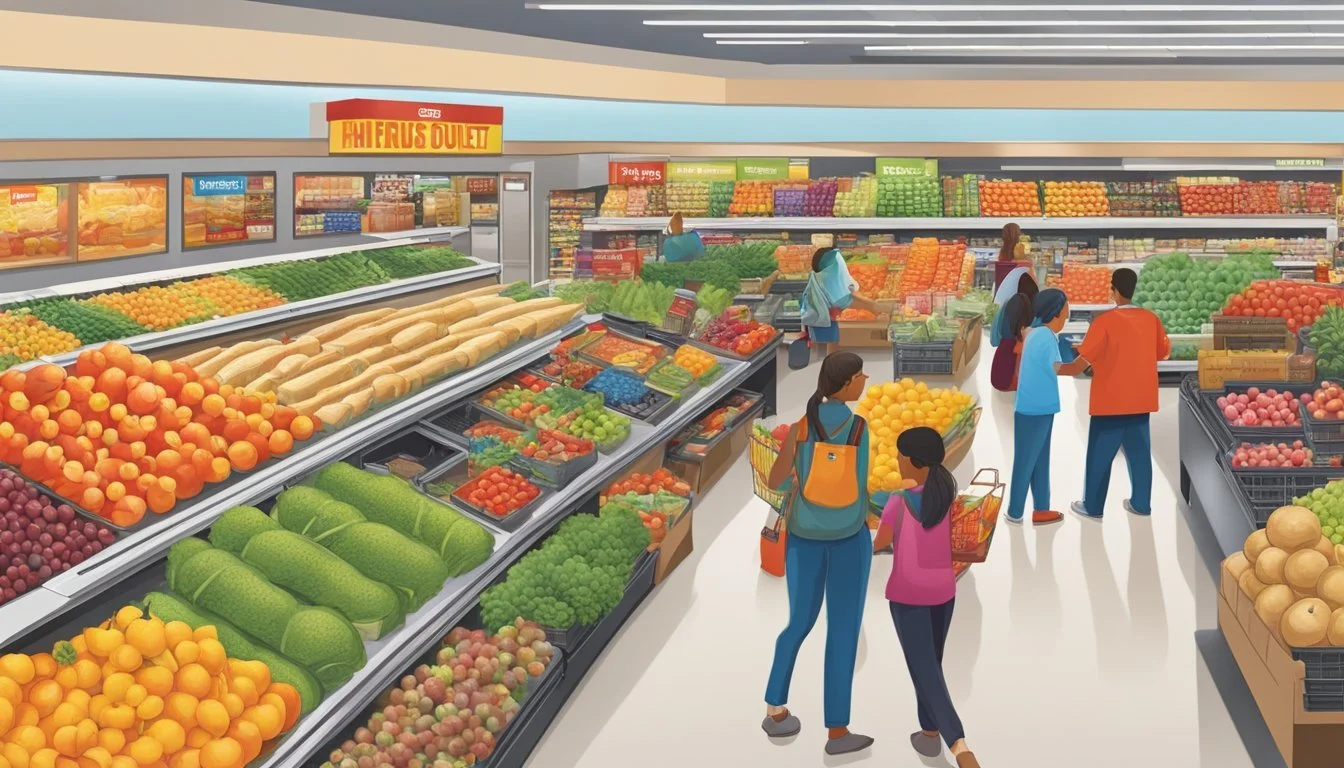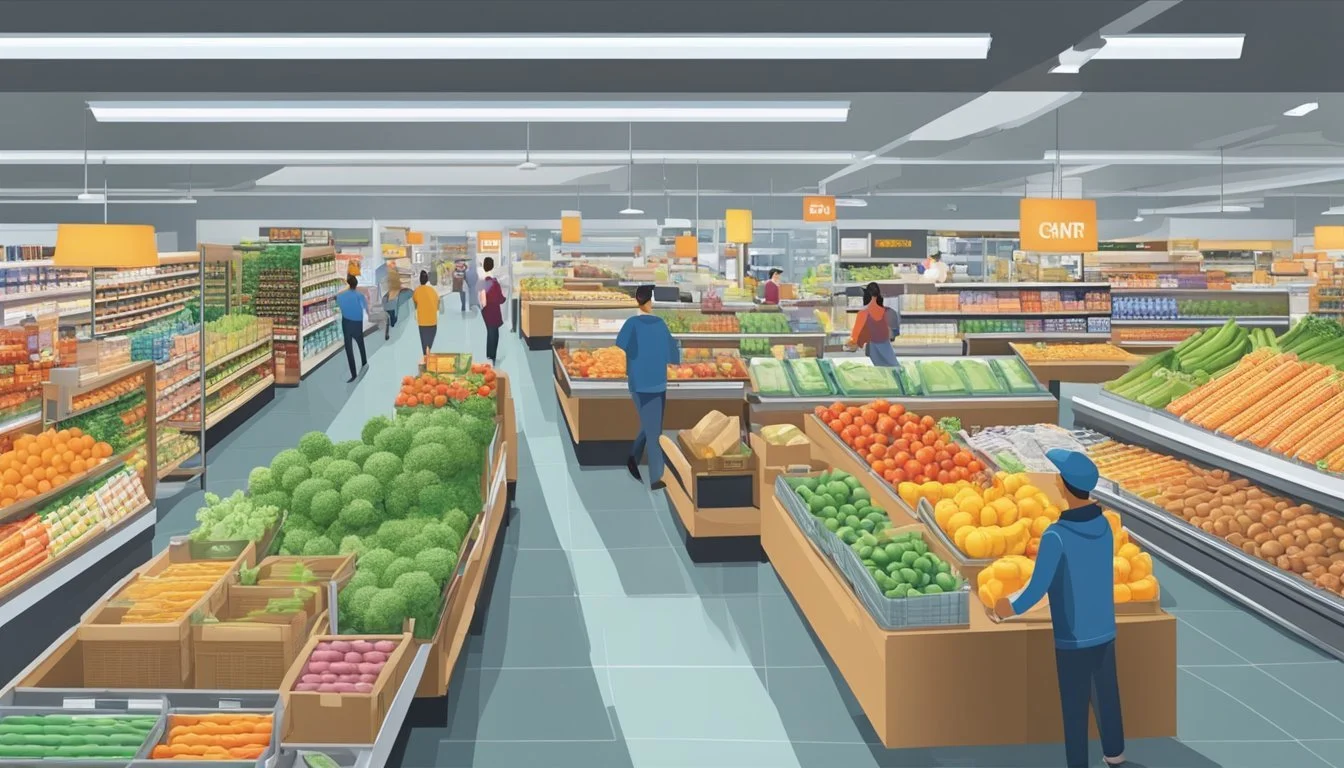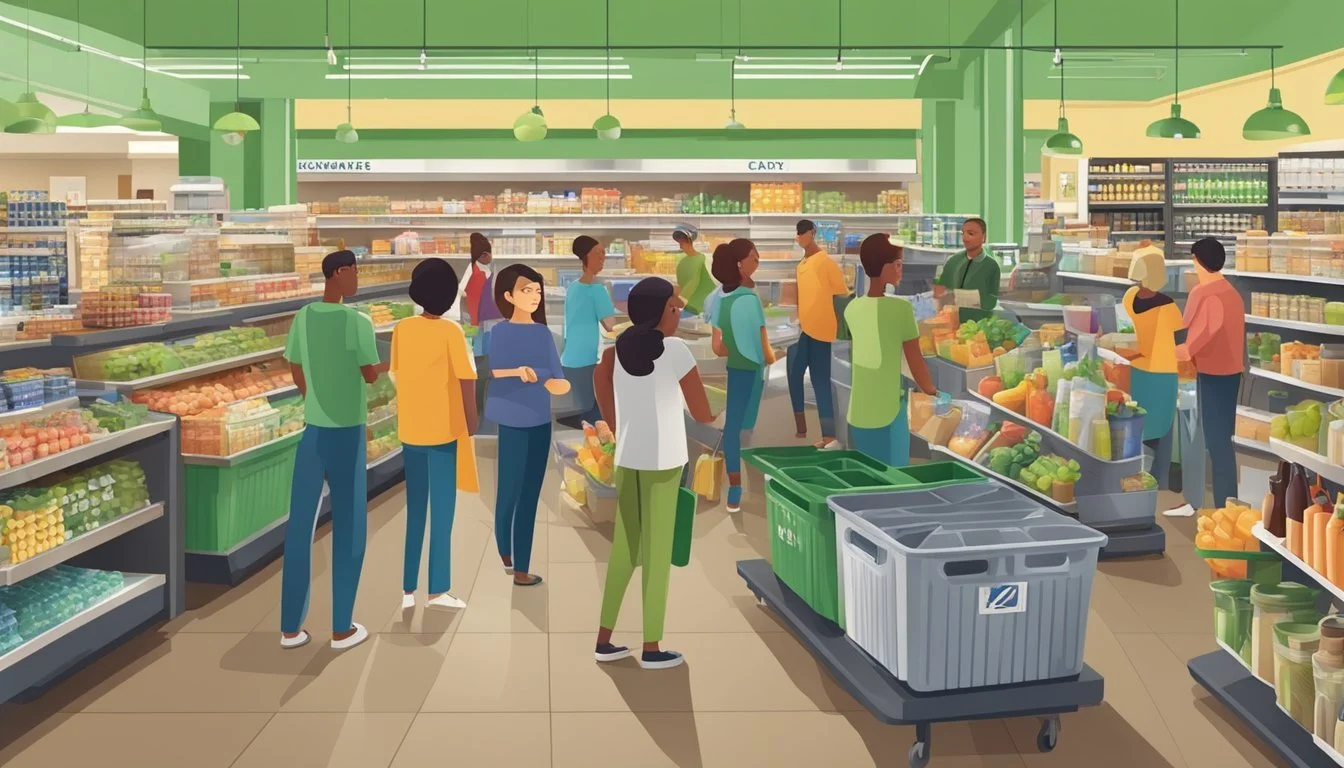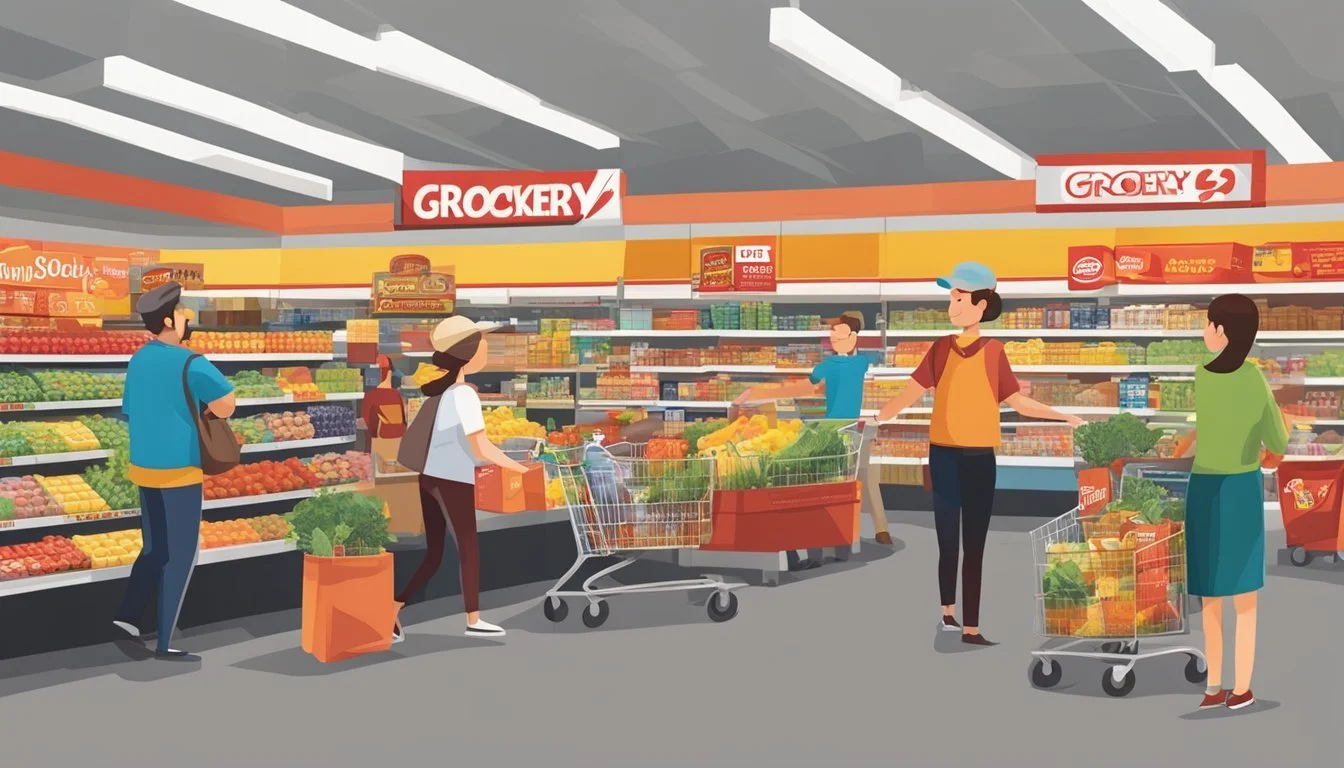Grocery Outlet vs H-E-B
A Detailed Comparison of Price and Quality
Grocery shopping can be a significant part of a household's budget, making the choice of store crucial for many consumers. Two popular options that often come up in discussions are Grocery Outlet and H-E-B. Both stores have loyal customer bases and offer distinct shopping experiences.
Grocery Outlet typically provides lower prices on a wide range of products, making it an attractive option for budget-conscious shoppers. The store specializes in selling overstock and closeout items, which allows them to offer significant discounts. H-E-B, on the other hand, focuses on providing a balance of quality and value, with a strong emphasis on fresh produce and local products.
When comparing these two grocery chains, factors such as product selection, store atmosphere, and customer service also come into play. While Grocery Outlet may have the edge in terms of overall affordability, H-E-B often receives praise for its cleanliness, product quality, and community involvement. The best choice ultimately depends on individual preferences and priorities.
History and Background
Grocery Outlet and H-E-B have distinct origins rooted in different regions of the United States. Both chains have grown significantly since their humble beginnings, shaping the grocery landscape in their respective markets.
Grocery Outlet's Emergence
Grocery Outlet began in 1946 when Jim Read purchased surplus military supplies in San Francisco. The company initially operated as Cannery Sales, selling canned foods at discounted prices.
In the 1970s, Jim's son Steven Read and his wife Joanne took over the business. They expanded the concept and rebranded as Grocery Outlet in 1987.
The chain focused on selling overstock and closeout merchandise at steep discounts. This unique approach allowed Grocery Outlet to grow steadily across the western United States.
H-E-B's Texan Roots
H-E-B's story started in 1905 when Florence Butt opened a small grocery store in Kerrville, Texas. She invested just $60 to launch the C.C. Butt Grocery Store.
Her son Howard E. Butt took over in 1919 and expanded the business. The initials H-E-B come from his name.
H-E-B grew throughout Texas, opening larger supermarkets and developing private label products. The company remained family-owned and deeply connected to its Texas heritage.
By the 1980s, H-E-B had become a major force in Texas grocery retail. The chain later expanded into Mexico and launched its upscale Central Market concept in 1994.
Business Model and Expansion
Grocery Outlet and H-E-B employ distinct strategies to grow their businesses and serve customers. Their approaches to expansion and market presence reflect their unique positioning in the grocery industry.
Grocery Outlet's Growth Strategy
Grocery Outlet operates on a flexible sourcing and distribution model. This allows them to offer brand-name products at discounted prices. The company focuses on opportunistic purchasing to secure deals on excess inventory or discontinued items.
Grocery Outlet plans to expand its store network. In 2022, they aimed to open 28 new locations. Their growth strategy includes:
Targeting underserved markets
Partnering with independent operators
Emphasizing value-driven shopping experiences
The company projects net sales between $3.33 billion and $3.38 billion, with a 4-5% increase in comparable store sales.
H-E-B's Market Presence and Diversification
H-E-B maintains a strong regional focus in Texas. The chain has built a loyal customer base through:
Tailoring product offerings to local tastes
Investing in community initiatives
Developing private-label brands
H-E-B's expansion strategy includes:
Opening larger format stores
Introducing specialty departments
Launching digital services and e-commerce platforms
The company has diversified its operations with concepts like Central Market, a gourmet grocery chain. H-E-B's commitment to Texas has solidified its position as a dominant regional player in the grocery industry.
Product Range and Quality
Grocery Outlet and H-E-B differ significantly in their product offerings and quality standards. Both stores aim to meet diverse customer needs but take distinct approaches to their inventory and sourcing practices.
Organic and Fresh Produce Offerings
Grocery Outlet provides a rotating selection of organic produce at discounted prices. Their inventory varies based on available deals, which can lead to inconsistent offerings. H-E-B, on the other hand, maintains a more stable organic produce section with consistently high quality.
H-E-B's commitment to freshness is evident in their locally sourced fruits and vegetables. They partner with Texas farmers to deliver farm-to-shelf produce quickly. Grocery Outlet's produce quality can be hit-or-miss due to their closeout model, but shoppers can find occasional bargains on organic items.
Meat, Dairy, and Specialty Items
H-E-B excels in offering a wide range of meat options, including grass-fed beef and free-range poultry. Their in-store butchers provide custom cuts and advice. Grocery Outlet's meat selection is more limited but often features discounted name-brand products.
In the dairy aisle, H-E-B stocks local and artisanal cheeses alongside national brands. Their milk and egg options include organic and specialty varieties. Grocery Outlet's dairy selection focuses on overstock deals, which can include premium brands at lower prices.
H-E-B's specialty items span international cuisines and gourmet products. They cater to diverse dietary needs with an extensive gluten-free range. Grocery Outlet's specialty offerings are less consistent but can surprise shoppers with unique finds at bargain prices.
Pricing and Value for Money
Grocery Outlet and H-E-B employ distinct pricing strategies to attract budget-conscious shoppers. Both stores aim to provide value, but their approaches differ in key areas.
Everyday Prices and Deals
Grocery Outlet specializes in offering deeply discounted products through opportunistic buying. They acquire excess inventory from manufacturers and other retailers, passing savings to customers.
H-E-B focuses on competitive everyday pricing for staple items like eggs, milk, and bread. They balance this with a strong emphasis on local sourcing and quality.
Grocery Outlet's prices can be up to 40-70% lower than conventional retailers on many items. However, selection may vary due to their sourcing model.
H-E-B maintains consistent pricing and product availability. Their "Low Price Lock" program guarantees prices on hundreds of essential items for extended periods.
Discounts and Coupons
Grocery Outlet does not typically offer traditional coupons or loyalty programs. Their business model relies on already-discounted merchandise.
H-E-B provides digital coupons through their app and website. Customers can load offers directly to their accounts for easy redemption at checkout.
H-E-B's "Combo Loco" deals bundle complementary products at reduced prices. These promotions change weekly, encouraging repeat visits.
Grocery Outlet occasionally features in-store specials on perishables or seasonal items. These are often unadvertised, creating a "treasure hunt" shopping experience.
Customer Experience and Services
H-E-B and Grocery Outlet offer distinct shopping experiences and customer service approaches. Each store has its own strengths in meeting customer needs and preferences.
Shopping Experience
H-E-B stores are known for their well-organized layouts and wide product selection. Customers can easily navigate aisles and find desired items. The stores often feature local and specialty products, appealing to diverse tastes.
Grocery Outlet, on the other hand, focuses on a treasure hunt-style shopping experience. Shoppers may discover unexpected deals and unique items. The store's inventory changes frequently, encouraging regular visits.
Both chains prioritize store cleanliness and maintain a pleasant atmosphere. H-E-B typically offers more spacious stores with modern amenities. Grocery Outlet provides a more compact shopping environment, emphasizing bargain hunting.
Customer Service
H-E-B consistently ranks high in customer satisfaction surveys. Their staff is often praised for being friendly, knowledgeable, and attentive. The company invests in employee training to ensure quality service.
Grocery Outlet stores are independently operated, leading to variations in customer service across locations. However, many franchisees prioritize personal attention and community engagement.
H-E-B offers additional services like in-store pharmacies, cooking demonstrations, and custom cake ordering. Grocery Outlet focuses on efficient checkout processes and helpful staff to assist with finding deals.
Both stores have implemented digital solutions to enhance customer experience. H-E-B's mobile app provides personalized offers and digital coupons. Grocery Outlet emphasizes in-store bargains rather than extensive digital services.
Brand and Private Label Offerings
Both Grocery Outlet and H-E-B offer unique store brands and private label products. These offerings provide value and variety to shoppers while differentiating each retailer.
Grocery Outlet's Unique Brands
Grocery Outlet sources its private label products from various manufacturers, resulting in an ever-changing selection. The company's NOSH (Natural, Organic, Specialty, Healthy) program features healthier options at discounted prices. Grocery Outlet recently launched its own private label brand, though details are limited.
The retailer's business model allows it to offer name-brand products at steep discounts. This approach provides customers with familiar brands at lower prices than traditional grocery stores.
H-E-B's Central Market and Excellence
H-E-B's private label offerings are extensive and highly regarded. The company's store brands include H-E-B, Hill Country Fare, and Meal Simple. These products span various categories, from pantry staples to prepared meals.
Central Market, H-E-B's upscale grocery brand, offers gourmet and specialty items. This line focuses on high-quality, unique products that appeal to food enthusiasts.
H-E-B's private labels have earned a reputation for quality and value. The company invests in product development and testing to ensure its store brands meet or exceed national brand standards.
Community and Social Responsibility
Grocery Outlet and H-E-B demonstrate strong commitments to their communities and sustainable practices. Both companies engage in local initiatives and implement environmentally-friendly policies to create positive impacts beyond their stores.
Local Community Engagement
Grocery Outlet empowers individual store operators to support local causes. This model allows for tailored community involvement that addresses specific neighborhood needs. Store owners often participate in food drives, sponsor youth sports teams, and donate to local charities.
H-E-B takes a more centralized approach to community engagement. The company runs large-scale programs like the "H-E-B Food Bank Assistance Program" and the "Feast of Sharing" holiday dinners. These initiatives provide millions of meals to Texans annually.
Both companies prioritize disaster relief efforts. During hurricanes and other crises, they mobilize resources to provide essential supplies and support to affected areas.
Sustainability Efforts
Grocery Outlet focuses on reducing food waste through its business model. By selling overstock and close-to-date items, the company diverts millions of pounds of food from landfills each year. They also implement energy-efficient lighting and refrigeration systems in their stores.
H-E-B has launched comprehensive sustainability initiatives. The company invests in renewable energy, with solar panels installed at multiple locations. They've also introduced reusable bags and packaging made from recycled materials.
Both retailers have programs to recycle plastic bags and packaging. H-E-B goes further by offering electric vehicle charging stations at select stores, promoting eco-friendly transportation options for customers.
Convenience and Accessibility
H-E-B and Grocery Outlet differ in their approaches to store locations and digital offerings. These factors significantly impact customer experience and shopping convenience.
Store Locations and Hours
H-E-B operates over 340 stores, primarily concentrated in Texas. Most H-E-B locations are open from 6 AM to 11 PM daily, with some 24-hour stores in select areas. The retailer strategically places stores in both urban centers and suburban neighborhoods.
Grocery Outlet has a wider geographic reach, with over 400 stores across six states. Their typical hours are 8 AM to 9 PM, though this can vary by location. Grocery Outlet often chooses locations in strip malls or standalone buildings in areas with lower real estate costs.
Online Shopping and Delivery Options
H-E-B offers robust digital services. Customers can shop online for curbside pickup or home delivery through the My H-E-B app or website. The retailer provides digital coupons and personalized offers based on shopping history.
Grocery Outlet has limited online options. While some stores partner with third-party delivery services, the company does not offer a centralized e-commerce platform. This aligns with their business model of offering deeply discounted, ever-changing inventory.
Both retailers accept various payment options, including credit cards and mobile payments. H-E-B offers a wider range of digital tools to enhance the shopping experience.
Competitive Analysis and Alternatives
Grocery Outlet and H-E-B face stiff competition from national chains and employ different market strategies. Their approaches to pricing, product selection, and regional presence shape how they compete in the grocery landscape.
Comparing to National Chains
Grocery Outlet and H-E-B contend with major players like Walmart, Amazon, and Kroger. Walmart leads in market share and price competitiveness. Amazon leverages online sales and its Whole Foods subsidiary. Kroger offers a wide product range and strong private label brands.
H-E-B excels in customer satisfaction, often ranking highly in surveys. Its focus on fresh produce and local products sets it apart. Grocery Outlet's discount model attracts budget-conscious shoppers.
Costco and Aldi pose unique challenges with their membership and low-price models respectively. Target and Safeway compete through diverse offerings and convenient locations.
Local Versus Global Market Strategies
H-E-B dominates in Texas but has limited expansion outside the state. Its strong regional focus allows for tailored product selections and community engagement.
Grocery Outlet operates in multiple states but maintains a relatively small footprint compared to national chains. It targets specific neighborhoods with its discount format.
Walmart and Amazon pursue global strategies, leveraging economies of scale. Kroger and Albertsons focus on national coverage through various regional banners.
Trader Joe's balances a national presence with a curated product selection, differentiating itself from larger chains. Aldi's expansion in the U.S. market showcases an international player adapting to local preferences.
Additional Services and Programs
Grocery Outlet and H-E-B offer diverse services beyond basic grocery shopping. These include financial support options and loyalty programs designed to enhance customer experience and provide added value.
Financial Services and Support
Grocery Outlet provides independent operator opportunities, allowing individuals to invest in and run their own stores. This program typically requires an initial investment of around $200,000, with financing options available through the company. Prospective operators should be prepared to contribute at least $25,000 of their own funds.
H-E-B offers different financial services. The company provides a branded debit card that allows customers to earn cash back on purchases. This card can be linked to a checking account, making it convenient for shoppers to manage their grocery expenses.
Loyalty Programs and Marketing Campaigns
H-E-B's loyalty program, H-E-B Points, rewards customers for their purchases. Shoppers earn points on qualifying items, which can be redeemed for discounts on future purchases. The program is integrated with the H-E-B mobile app, making it easy for customers to track their rewards.
Grocery Outlet takes a different approach to customer engagement. The company focuses on influencer marketing programs to spread awareness of their deals and unique shopping experience. These campaigns often highlight the store's bargain-hunting appeal and ever-changing inventory.
Both retailers use targeted marketing campaigns to attract and retain customers. H-E-B's campaigns often emphasize local products and community involvement, while Grocery Outlet highlights its discount prices and treasure hunt shopping experience.
Conclusion and Final Thoughts
Grocery Outlet and H-E-B both offer unique shopping experiences for budget-conscious consumers. Grocery Outlet provides significant discounts on brand-name products through its opportunistic buying model.
H-E-B, on the other hand, focuses on a wide selection of high-quality private-label items and fresh produce. The Texas-based chain has earned a reputation for exceptional customer service and community involvement.
Price-sensitive shoppers may find better deals at Grocery Outlet, especially on packaged goods. H-E-B typically offers more consistent pricing and a broader range of products, including fresh meats and prepared foods.
Store atmosphere differs between the two. Grocery Outlet stores are often no-frills, while H-E-B invests in clean, well-organized spaces with attractive displays.
Both chains prioritize customer satisfaction, but H-E-B's larger footprint and resources allow for more comprehensive services and amenities. Grocery Outlet's smaller stores can provide a quicker shopping experience for those seeking specific bargains.
The choice between Grocery Outlet and H-E-B ultimately depends on individual preferences, shopping habits, and geographic location. Each retailer has its strengths, catering to different aspects of the grocery shopping experience.









